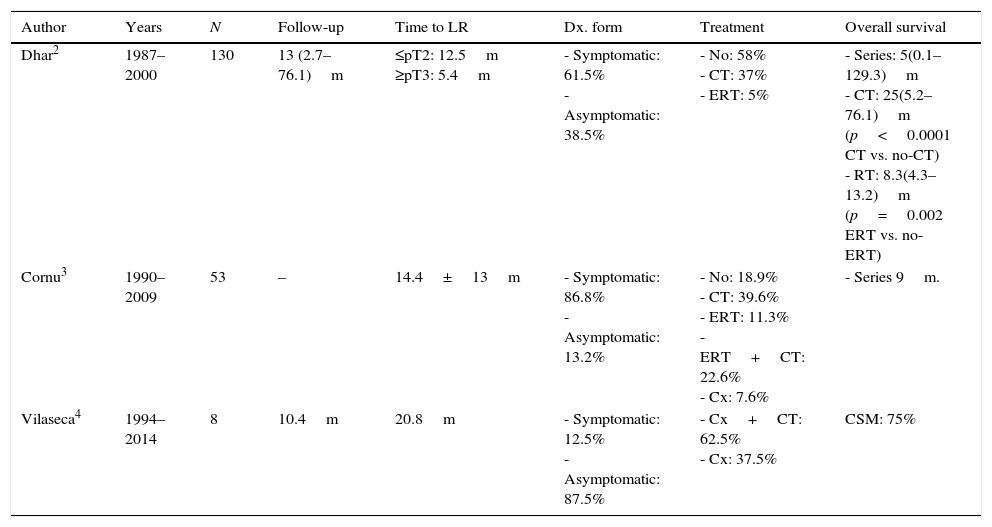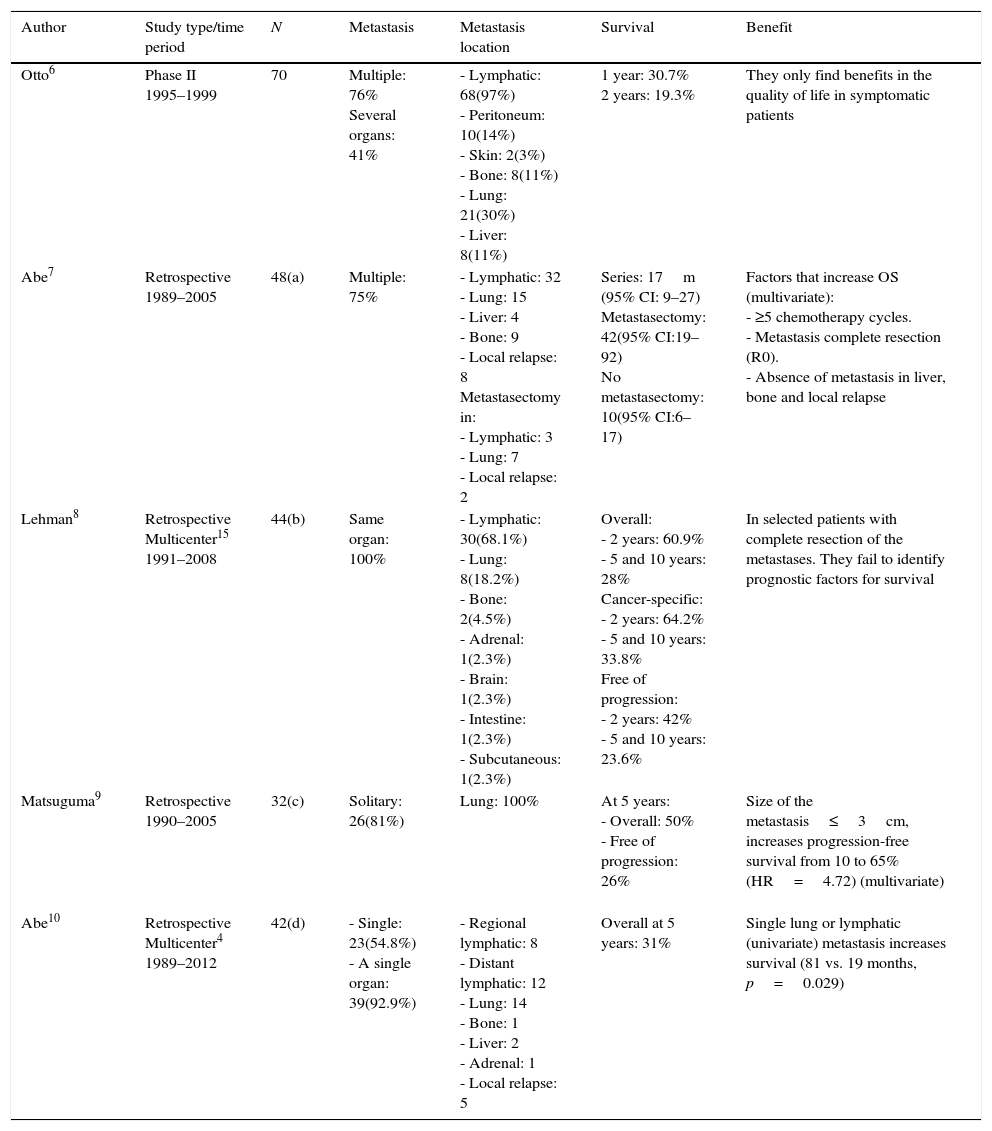Bladder cancer is the cause of more than 150,000 deaths per year. The overall rate of survival is approximately 45%, with a 10-year recurrence-free rate of 50–59%, with no changes in the last decade.
ObjectiveDue to a lack of agreement on the follow-up of cystectomy or on a uniform treatment when faced with the various types of recurrence, we have analyzed the most recent literature in an attempt to unify the criteria for the diagnosis and treatment of bladder cancer.
Acquisition of evidenceReview of Spanish and English publications in the medical literature in the last 10 years, highlighting the most significant series in terms of the number of patients, follow-up time, as well as the existing meta-analyses.
Synthesis of the evidenceRecurrence after cystectomy can occur in the urinary apparatus (upper urinary tract or distal urethra) and local (cystectomy bed) and/or distant metastases. Despite strict control, more than 60% of the relapses are discovered based on symptoms and not by the routine follow-up test. Locoregional and distant relapses are more common the more advanced the stage at the time of cystectomy, going from 11–21% in pT2N0 to 52–72% when there is lymphocytic N+ involvement.
Recurrence in the urethra and/or upper urinary track has other prognostic factors such as multiplicity, the presence of Cis and involvement of prostatic stroma. There are various treatments for tumor relapses. Increasingly, the patient's comorbidity is considered when deciding on the therapeutic strategy. Treatments are typically multimodal and include surgery, radiotherapy and chemotherapy.
ConclusionThe follow-up of patients who undergo cystectomy should be individualized, taking into account the prognostic factors of recurrence and the patient's comorbidity, assuming that in some cases, multimodal treatment is indicated.
El cáncer de vejiga es la causa de más de 150.000 muertes/año. La tasa de supervivencia global es de aproximadamente un 45% con un periodo libre de recurrencia a diez años del 50-59%, sin cambios en la última década.
ObjetivoAl no existir un acuerdo en el seguimiento tras cistectomía ni un tratamiento uniforme ante los distintos tipos de recidiva, analizamos la literatura más reciente para intentar unificar criterios en su diagnóstico y tratamiento.
Adquisición de evidenciaRevisión de las publicaciones en castellano e inglés de la literatura médica en los últimos diez años, destacando las series más importantes en número de pacientes, tiempo de seguimiento, así como los metanaálisis existentes.
Síntesis de la evidenciaLa recurrencia tras cistectomía puede producirse en el aparato urinario (tracto urinario superior o uretra distal), local (lecho de la cistectomía) y/o metástasis a distancia. A pesar de un control estricto, más del 60% de las recidivas se descubren en base a la sintomatología y no en las pruebas rutinarias de seguimiento. Las recidivas locorregionales y a distancia son más frecuentes cuanto más avanzado es el estadio en el momento de la cistectomía, pasando del 11-21% en pT2N0 al 52-72% cuando existe afectación linfática N+.
La recidiva a nivel uretral y/o en el aparato urinario superior tiene otros factores pronósticos como la multiplicidad, presencia de Cis, afectación del estroma prostático, etc. Los tratamientos de las recidivas tumorales son diversos y, cada vez más, se considera la comorbilidad del paciente a la hora de decidir la estrategia terapéutica. Habitualmente los tratamientos son multimodales, incluyendo cirugía, radio y quimioterapia.
ConclusiónEl seguimiento de los pacientes sometidos a cistectomía debe ser personalizado teniendo en cuenta los factores pronósticos de recurrencia y la comorbilidad del paciente, asumiendo que, en algunos de ellos, estará indicado el tratamiento multimodal.








